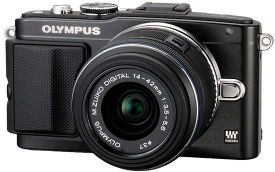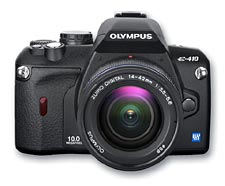TOPIC: MICRO FOUR THIRDS SYSTEM
EVF or OVF?
22nd December 2019In photography, some developments are temporary fads, while others create enduring changes. Special effects filters and high dynamic range techniques generated excitement before their usage became more restrained. The same applies to most image processing techniques, as good taste eventually prevails. Some developments, however, signal more substantial shifts.
The biggest example of the latter is the move away from film photography to digital image capture. There still are film photographers who largely depend on older cameras, since very few are made any more. While my own transition came later than others, I hardly use film any more, and a lack of replacement parts for cameras that are more than fifteen years old only helps to keep things that way. Another truth is that digital photography makes me look at my images more critically, which helps me improve.
Also, mobile phone cameras have become so capable that the compact camera market has shrunk dramatically. In fact, I gave away my Canon PowerShot G11 earlier this year because there was little justification in hanging onto it. After all, it dated back to 2010 and a phone would do now what it once did, though the G11 did more for me than I might have expected. Until 2017, my only photos of Swedish locations were made with that camera. If I ever was emotional at its departure, and I doubt that I was, that is not felt now.
If you read photography magazines, you get the sense that mirrorless cameras have captured a lot of the limelight, and that especially is the case with the introduction of full frame models. Some writers even are writing off the chances of SLR's remaining in production, though available model ranges remain extensive despite the new interlopers. Whatever about the departure of film, the possible loss of SLR's with their bright optical viewfinders (OVF's) does make me a little emotional since they were the cameras that, so many like me aspired to owning during my younger years and the type has served me well over the decades.

Even so, I too have used mirrorless cameras and an Olympus PEN E-PL5 came into my possession in 2013. However, I found that using the screen on the back of a camera was not to my liking and the quality of mobile phone cameras is such that I no longer need any added portability. However, it needs to be remembered that using a Tamron 14 to 150 mm zoom lens with the body cannot have helped either. Wishing to sample a counterpart with an electronic view finder, I replaced it with an Olympus OM-D E-M10 Mark III earlier this year and have been getting on fine with that.
The camera body is compact, yet handles like an SLR. I turned off the automatic switching between viewfinder and screen because I found it distracting. I prefer to switch between them manually. Getting used to the electronic viewfinder (EVF) took some time, but adding a spirit level overlay proved both useful and educational. The camera produces images with strong greens and blues, which suits me since I like both colours. The 16.1 megapixel sensor creates smaller files that upload quickly to back-up services. My Tamron lens works flawlessly, and keeping this lens was a key reason I stayed with Olympus despite a shutter failure on my previous camera. The repair was done efficiently and at a reasonable price.
Despite the quality of the new Olympus, it has not replaced my Canon EOS 5D Mark II and Pentax K5 II SLRs. The Olympus has a much smaller frame. In January, I bought a new Sigma 24 to 105 mm zoom lens for the Canon after my older lens developed a fault that could not be fixed. The new lens performs well and produces impressively sharp images. However, the full frame Canon setup is heavy, even when used handheld. This is why the Pentax remains my choice for travelling abroad. Both the Canon and Pentax offer brighter viewfinders, which I value. Therefore, the OM-D complements rather than replaces my other cameras.
Although I can work with electronic viewfinders (EVF's) if single-lens reflex cameras (SLRs) become obsolete, I plan to use mainly SLRs for now. Canon recently launched a new enthusiast model, indicating ongoing interest in SLRs. Canon appears to envision a hybrid approach where using the screen on the back of the camera might provide faster autofocus or other functions, while the optical viewfinder (OVF) allows traditional operation. This makes me wonder if future cameras might include viewfinders that switch between EVF and OVF modes. This idea might be both far-fetched and fascinating, but other unforeseen possibilities might exist. One thing is certain: we live in a time of rapid change.
A Look at a Compact System Camera
4th September 2013In August, I acquired an Olympus Pen E-PL5, and I'm still getting used to it. Its main appeal was combining SLR functionality with compact camera size. This was an upgrade from my Canon PowerShot G11 without the bulk of a larger camera.

When I considered Canon's EOS M before choosing the E-PL5, I was put off by its slow autofocus. The lack of a mode dial was another concern, though its APS-C sensor and price of around £399 were attractive (and I liked Canon's tendency to overexpose when examining images from an old Canon EOS 10D). After seeing a camera comparison in Practical Photography, I bought that issue. They preferred the similarly priced Olympus Pen E-PM2 over the Canon. Though a Panasonic won the test, I was interested enough in the Olympus to research further. Unlike the E-PM2 and EOS M, the E-PL5 has both a mode dial and extra grip, so I chose it despite the higher price. I had noticed discounted Olympus Pen models before, but this purchase was a more deliberate investment.
Breaking my usual preference for black cameras for variety's sake, I chose the silver E-PL5 from the three available colours (black, silver and white). The body is very compact, with the lens taking up most of the bulk. The standard 14-42 mm zoom means this isn't a shirt-pocket camera, so I bought a black Lowepro Apex 100 AW case. The case fits the camera snugly, making me wonder if I should have chosen a larger one, but it's working well. To protect the lens during outings, I also added a 37 mm Hoya HMC UV filter. The lens's plastic construction extends further than I expected and doesn't fully retract into its housing like some of my Sigma lenses.
On my first test run, I needed to work out how to hold the camera. My Canon PowerShot G11's powered zoom and autofocus made it more intuitive to hold, as was true for any SLR I've used. Holding the small body while adjusting the zoom lens was awkward at first. Eventually, I learned to steady the body with my right thumb (the curved thumb grip on the back holds a thumb vertically) while freely adjusting the lens with my left hand. An electronic viewfinder instead of the screen would have made things easier, but they're expensive, and I had already spent enough.
After learning to hold the camera, I needed to adjust to its exposure characteristics. From my experience, it tends to overexpose. Though I set it to store raw (ORF) files that can be fixed later, I prefer more control during capture. Also, I haven't found a spot or partial metering button like those on my SLR or G11. This means either using exposure compensation with aperture priority mode or switching to fully manual exposure. Other familiar modes are available (shutter priority, program, automatic, etc.). While getting familiar with the camera, I'm using bracketing after setting ISO to 400, increasing screen brightness and adding histograms to playback views. As my grip becomes more secure, I'm using the dial to adjust settings like aperture (f/16 remains my favourite despite what others think about micro four thirds sensor size) and compensation, keeping scenes consistent to test the camera's response to changes.
Though I'm still learning, I'm seeing pleasing results that encourage me to continue; some remind me of my Pentax K10D. The E-PL5 is slower to use than the G11, but that's often beneficial for photography. Being forced to slow down in our hectic world is another advantage. The G11 is seeing less use now, with sunny days offering chances for more experimentation and familiarisation. My introduction to compact system cameras has shown they're very different from compact fixed lens cameras or SLRs. Neither type is truly replaced; instead, a new category has emerged.
Two reviews of the Olympus E-410 tell very different stories
21st June 2007
Recently, I encountered two very different reviews of the newly launched Olympus E-410 DSLR, in Which Digital Camera and Practical Photography, respectively. The review in the former was a positive affair, though it was a first look at the camera, but the impression formed by the latter reviewer was lukewarm in nature.
The camera features a live electronic viewer on its back, a carry-over from digital compacts and a feature that I may never use. While that might be the unique selling point for the camera, good image quality and the fact that it possesses a cleaning mechanism for its sensor are of much more interest to me.
Ironically, the Practical Photography review spent most of its time talking about the very feature of the camera that interests me the least, with only a scant mention of quality; to be frank, I didn't find it a very useful appraisal even if the electronic viewfinder may not be all that it's cracked up to be, and it's picture quality and camera handling that ultimately matter to the photography enthusiast.
In contrast, Which Digital Camera seemed to give a more rounded view and proved to be of more interest, and I'd be interested to see what the likes of Photography Monthly and Amateur Photographer might have to say. Incidentally, I also shall be awaiting the Which Digital Camera appraisal of Ricoh's Caplio GX100 in their next issue.